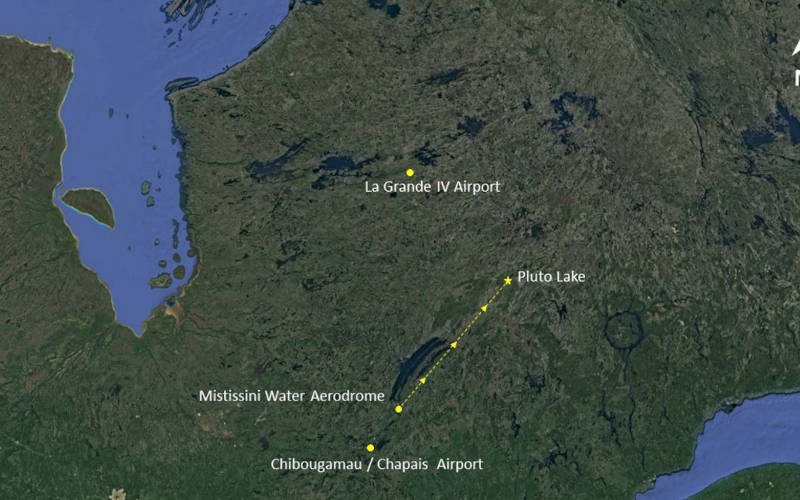December 13, 2023
TSB reports on 2022 aircraft collision with water in Pluto Lake
Jon Robinson
Occurrence aircraft after the collision with water. (Photo: Department of National Defence search and rescue aircraft, TSB)
The Transportation Safety Board of Canada released its investigation report (A22Q0122) into the 2022 aircraft loss of control and collision with water in Pluto Lake, Quebec. The pilot was the sole person on board and suffered serious injuries.
On October 12, 2022, a True North Airways Inc. de Havilland DHC-3 Otter aircraft on floats was conducting a visual flight rules flight, with one pilot on board, from Mistissini Water Aerodrome, QC, to Pluto Lake, QC, where it would deliver cargo and pick up passengers. At approximately 9:29 am, while manoeuvring for landing on Pluto Lake, the aircraft collided with the surface of the water. The pilot sustained serious injuries and the aircraft was significantly damaged.
TSB explains its investigation found, that due to the visual cues of the landing area that were visible to the pilot, the close proximity of the landing site where passengers were waiting, and the natural tendency to continue a plan under changing conditions, the pilot continued the approach despite visibility in the local area being below the minimum required for visual flight rules flight.

Owing to the reduced visibility, TSB explains the pilot’s workload as he was manoeuvring for landing, was high and his attention was focused predominantly outside the aircraft to keep the landing area in sight. As a result, TSB explains a reduction in airspeed went unnoticed and, during the aircraft’s turn from base to final, the increased wing loading, combined with the reduced airspeed, resulted in a stall at an altitude too low to permit recovery and the aircraft collided with the water.
The aircraft was equipped with a stall warning light, but it was not equipped with an auditory stall warning system. If aircraft stall warning systems do not provide multiple types of alerts warning the pilot of an impending stall, TSB explains there is an increased risk that a visual stall warning alone will not be salient enough and go undetected when the pilot’s attention is focused outside the aircraft or during periods of high workload.
After the occurrence, TSB explains the company took safety actions, including amending its operations manual to more accurately reflect the Canadian Aviation Regulations regarding visual flight rules weather limits.
See TSB’s investigation page for more information.
